
TARGET 120627
Himalayan Honey Hunters
Cling to Cliffside Tradition
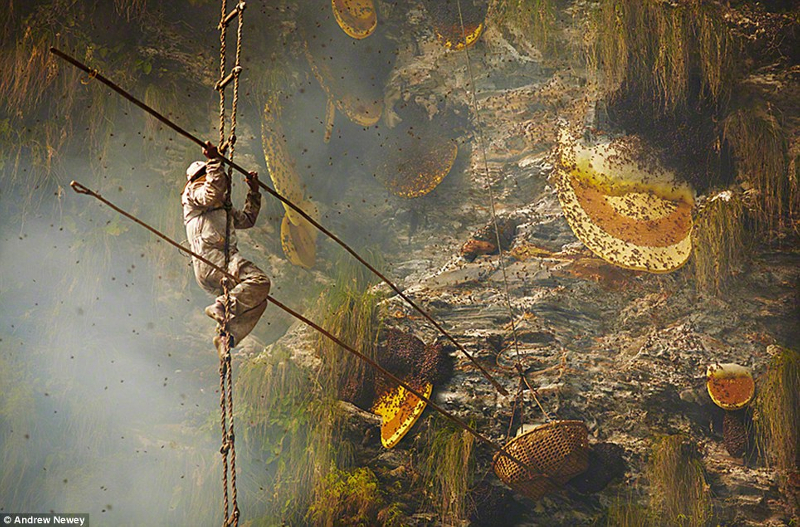
Digging for liquid gold.
Twice a year high in the Himalayan foothills of central Nepal teams of men gather around cliffs that are home to the world's largest honeybee, Apis laboriosa. The men are there to harvest the honey, as they have for countless generations. Historians have found evidence that dates the practice back to 11,000 BC.
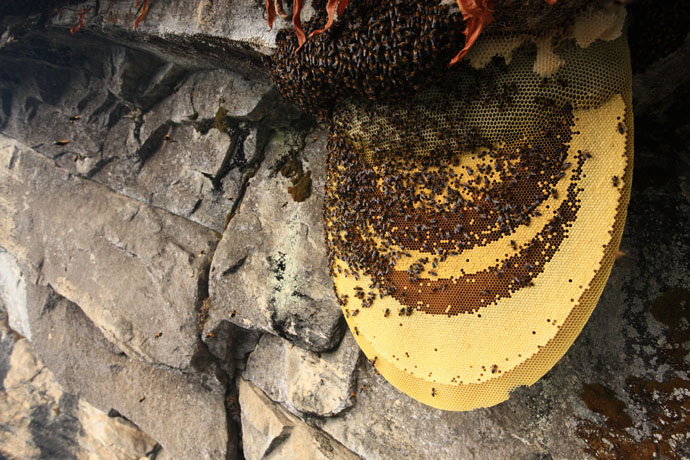
Most of the nests are located as high as 200 feet (61 meters) on steep, inaccessible, south-west facing cliffs to avoid predators and for increased exposure to direct sunlight.
The harvest ritual, which varies slightly from community to community, begins with a prayer and sacrifice of flowers, fruits, and rice. The men also drink a home-made form of beer as an apeasement to the god of the cave.Then a fire is lit at the base of the cliff, using green wood and leaves to produce the most smoke. Smoke is traditionally used to calm bees. But smoke puts these bees into a state of panic and bees from every colony swarm to protect their colonies.
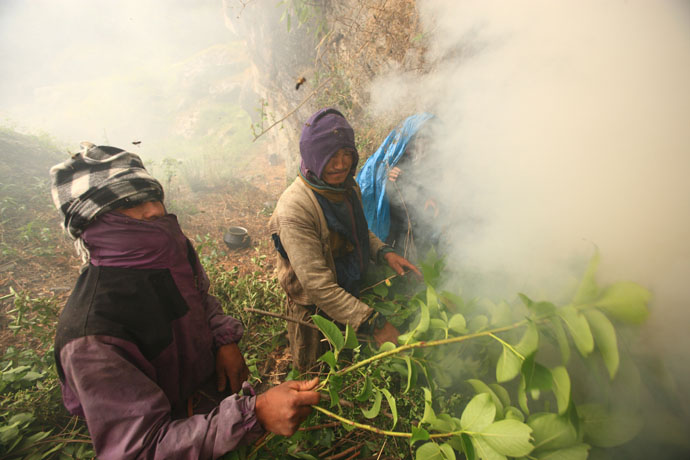
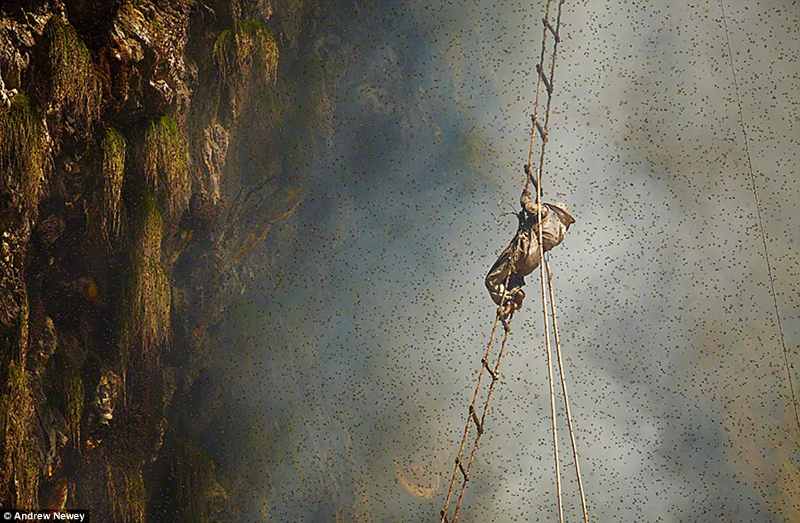
From above, a honey hunter descends the cliff harnessed to a ladder by ropes. As his mates secure the rope and ladder from the top and ferry tools up down as required, the honey hunter fights territorial bees as he cuts out chunks of honey from the comb. His face, hands and feet are bare, and the number of stings are sometimes in the hundreds.
The honey hunter has the very difficult task of ignoring the bee stings while dangling on a swinging rope ladder, using a very long stick with one hand to sever pieces from the comb and using another long stick to maneuver a basket under the pieces as they fall, in order to keep the pieces from splattering all the honey onto the rocks, below.
Now, both the bees and traditional honey hunters are in short supply because of the overzealous harvests of more modern and more efficient methods. That is not only bad for the traditional hunters and for the bees. Since the honeybee serves as the prime pollinator for the eco-region, the bee's decline is thought to have devastating consequences for the native, high-altitude plants that rely on the honeybee for their reproduction.
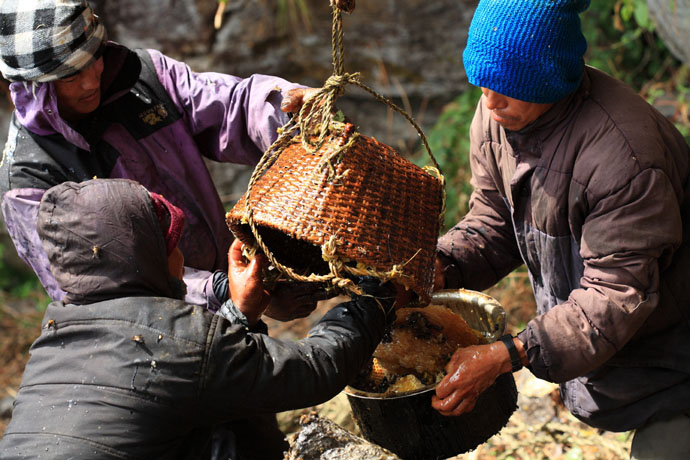
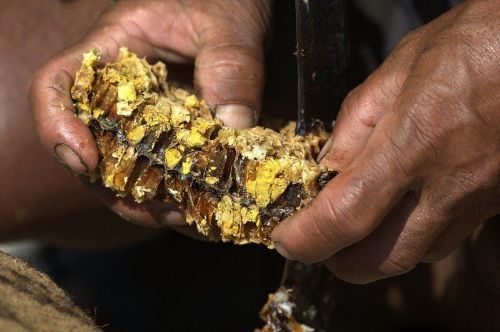
The baskets of honey comb are lowered to the ground where they are emptied into metal containers and workers there collect the honey by squeezing it out of the comb.
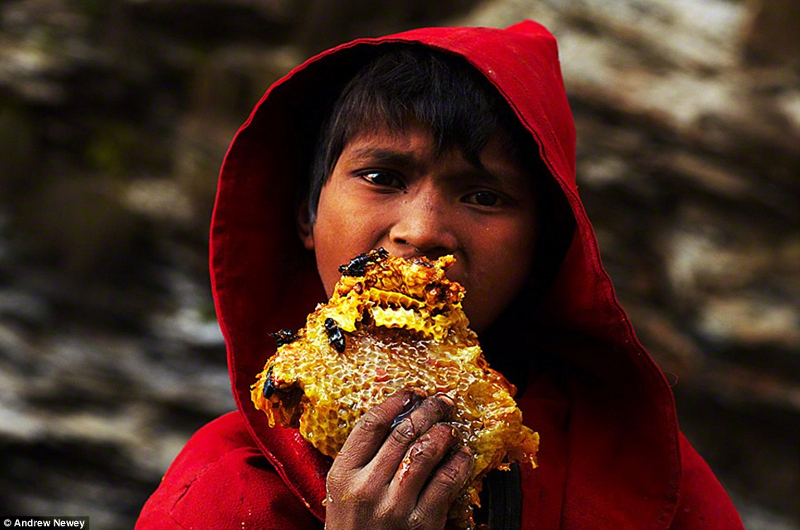
Of course, pieces miss the basket, and while those are being collected from the ground, it is only appropriate to sample the honey from it - just to be sure it's good, of course. The children who come with their fathers also get their fill of honey and the chewy honeycomb.
Nectar produced by some species of rhododendron in high mountain areas brings medicinal qualities to this honey. It has relaxing properties and is used a sedative. It is also reported that some Korean local healers use this honey for treating addicts."
In the past few decades, demand for this A. laboriosa honey, which is produced during the spring when the rhododendrons bloom, has soared. A kilogram (2.2 pounds) fetches upwards of U.S. $15 on the open market.
To supply demand, Nepal's forestry department has transferred ownership of the cliffs from indigenous communities to the government and opened up honey harvesting rights to contractors on a first-come, first-served basis.
As a result, traditional honey hunting techniques and rituals that ensured a sustainable harvest and maintained bee populations have given way to non-traditional techniques that denude cliffs of nests in an effort by contractors to maximize profits.FEEDBACK MAP
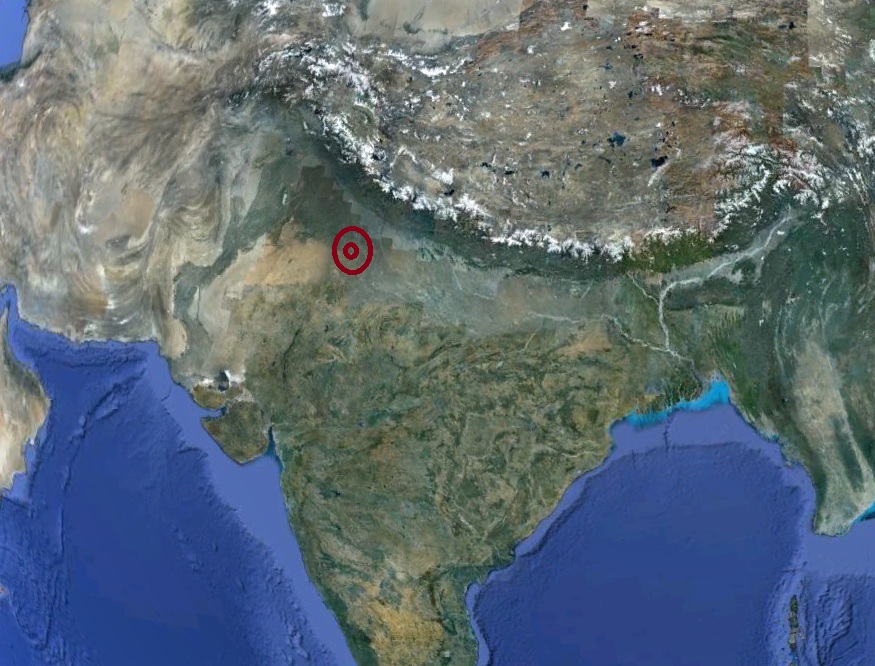
If you got impressions for which this feedback is insufficient, more information,
pictures and videos can be found at the following web sites:
The Daily Mail (Source of most of the information)
Data, history, local terminology, etc.
The Bee Photographer (Source of most of the pictures)
Wired On-line magazine
Many thanks to Ray McClure for this target